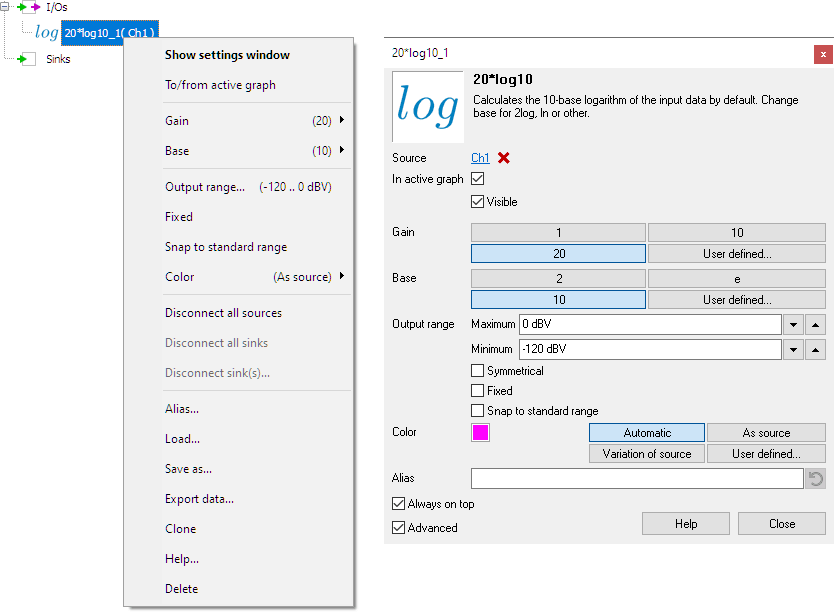
A typical application of the Logarithm I/O is to create a vertical axis in dB in the oscilloscope or spectrum analyzer.
Properties
To control the behavior of the Logarithm I/O, several properties are available.
These can be accessed through a popup menu which is shown when the I/O is right clicked in the Object Tree.
The properties can also be accessed through its settings window which is shown when the I/O is double clicked in the Object Tree.
To open the Object tree, click the  Show object tree button.
Show object tree button.

By default, the settings window only shows the most used settings. When Advanced is ticked, the extended window with all settings is shown. See also the program settings.
Gain
The Gain property sets the gain of the Logarithm I/O. Commonly used gain factors of 1, 10 and 20 are available, as well as a user defined setting. The default value for the gain is 20.
Base
The Base property sets the base number of the logarithm calculation. Commonly used base numbers of 2, e and 10 are available, as well as a user defined setting. The default value for the base number is 10.







